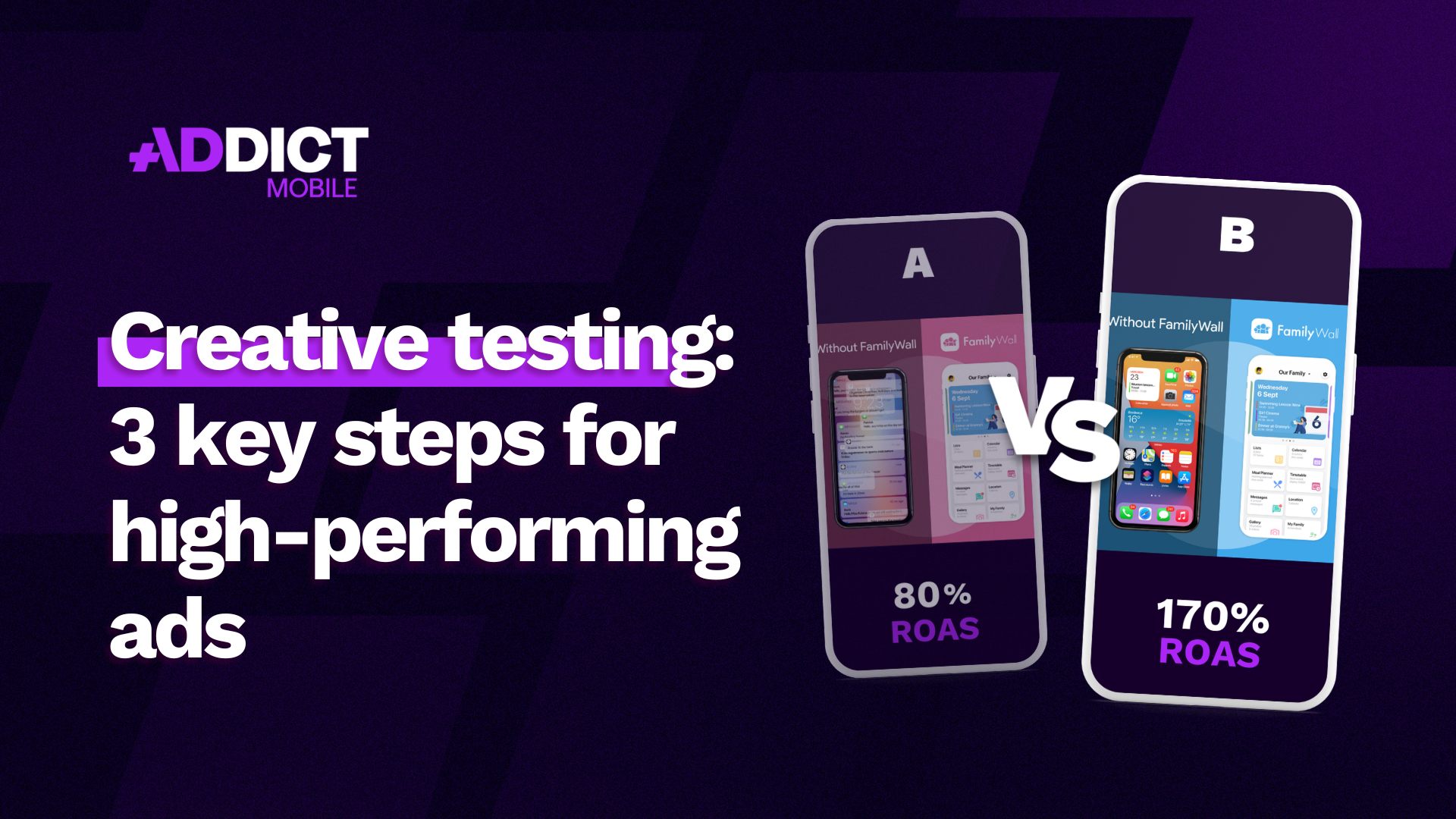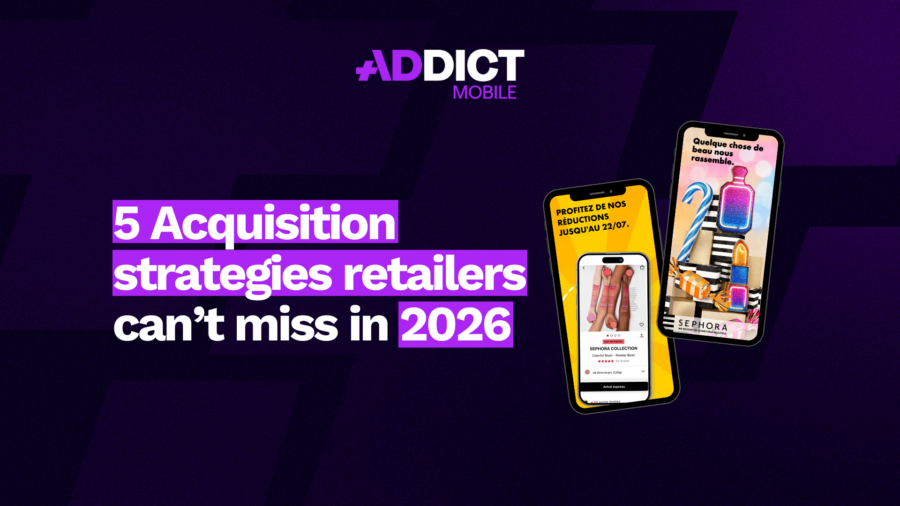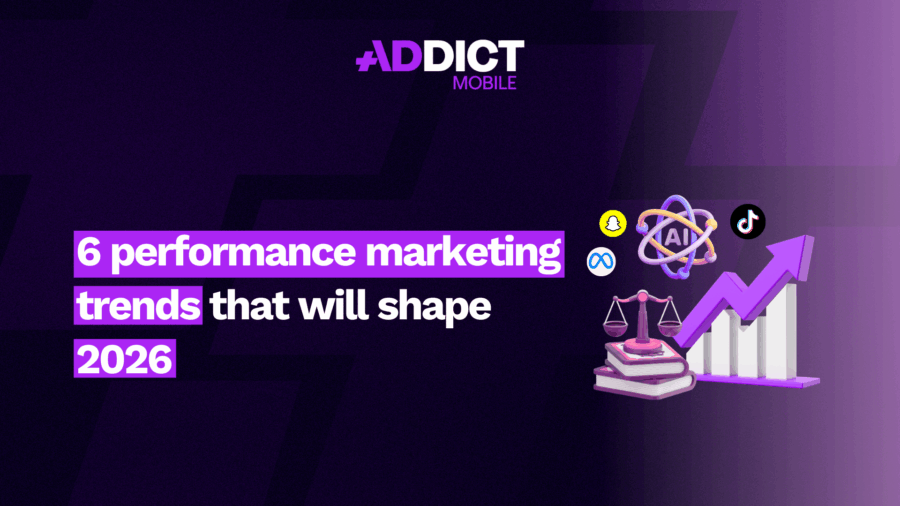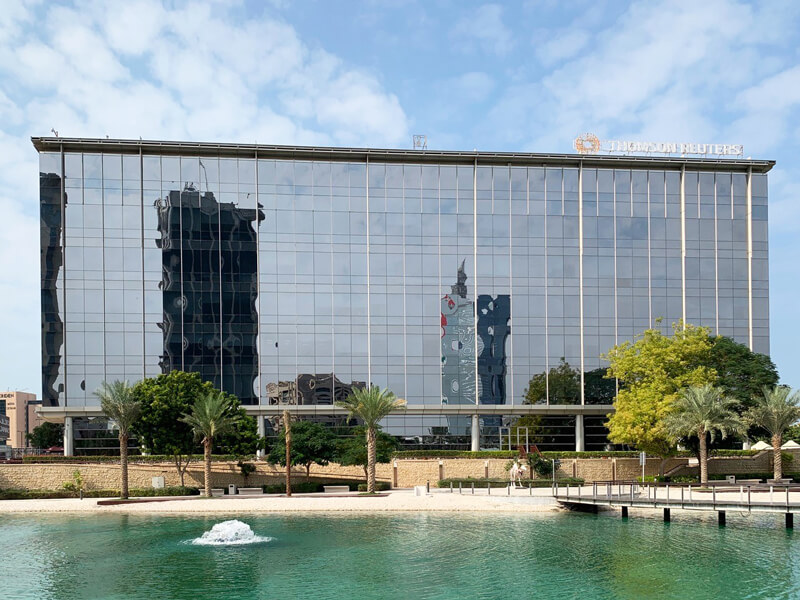Creative testing: 3 key steps for high-performing ads

Creatives are the backbone of acquisition! As tracking users becomes more challenging, the impact of creatives is more crucial than ever for capturing attention.
But finding the ones that truly make a difference isn’t easy. The numbers speak for themselves: according to Appsflyer, 90% of ad spend benefits only 10% of the ads. Additionally, with a gaming client of Addict Mobile, out of over 450 creatives tested, only 1.5% of the visuals produced proved to be winners.
So, how can you optimize the creative process to maximize results without wasting time or budget? The answer lies in a structured approach to creative testing.
Key Takeaways
- Creative testing = structured method: test multiple concepts to identify the creatives that truly perform.
- Phase 1 – Installs: measure efficiency in driving installs via IPM, by testing 5–6 creatives under equal conditions.
- Phase 2 – Advanced goals: evaluate winners on deeper KPIs (CPA, ROAS) and test their ability to scale with larger budgets.
- Phase 3 – Comparison: pit new creatives against existing top ads to see if they can match or outperform them.
- Flexible method: works for both large advertisers and smaller budgets. The golden rule is to test, analyze, and iterate continuously.
What is Creative Testing?
Creative testing is a structured method for testing multiple visuals to identify those that drive the best performance. By experimenting with key elements like messaging, visuals, colors, or styles, this method enhances campaign impact and aligns with users’ ever-evolving expectations.
Depending on the goals, different types of tests can be conducted:
- Identifying top-performing ads to maximize the effectiveness of performance campaigns.
- Testing a concept’s marketability to assess its potential before fully investing in it.
- Analyzing specific elements (especially for mobile games), like characters or graphic styles, to refine the user experience and strengthen engagement.
How does it work in practice?
Phase 1 – Optimized testing for installs
Objective
The goal is to measure each creative’s ability to drive installs while ensuring fair testing conditions.
Campaign structure
Each ad set is dedicated to a single creative, allowing for precise analysis. To ensure fair comparisons, the aim is to invest the same amount or apply consistent criteria for each creative. Addict Mobile recommends testing 5 to 6 concepts simultaneously, depending on the budget and campaign goals.
Budget
The budget for this phase varies based on factors like campaign reach, available budget, CPM, etc. This allows for test conditions to be adjusted to the specifics of each campaign.
For example, each ad set can be paused once a certain spend, installs, or impressions threshold is reached. Automated rules can be set up to stop ads based on defined criteria.
Results
At the end of this phase, creatives are evaluated based on their IPM, their effectiveness in driving installs. The top-performing creatives, with the highest IPMs, move on to the next phase.
Keep in mind
While IPM is a key indicator for measuring the effectiveness of creatives in generating installs, it’s essential to stay mindful of other KPIs. A creative with a high IPM often indicates strong performance, but other metrics may reveal significant potential even if the IPM is lower.
It’s therefore recommended to remain flexible in identifying high-potential creatives by considering all relevant KPIs before deciding to move them to the next stage.

Phase 2 – Testing optimized for campain objectives
Objective
To test the winning creatives from Phase 1 on advanced performance goals (Event/Value) to assess their potential to handle larger investments.
Campaign structure
- Option 1 : 1 ad set = 1 creative
Each ad set is dedicated to a single creative, allowing for isolated comparison of results. Comparison criteria are adjusted according to the test requirements: similar investment, equivalent number of installs, or target events.
- Option 2 : 1 ad set with multiple creatives
Several winning creatives from Phase 1 are grouped within a single ad set. This allows the algorithm to automatically prioritize the best-performing creative according to the campaign objectives.
This option also tests scalability by assessing each creative’s ability to maintain a good ROAS with higher budgets. For example, a creative that performs well at a small scale might not sustain a larger budget but can still be activated occasionally to boost the primary creatives.
Which option to choose?
- Option 1: This method is more costly but provides total control, with each creative tested independently using identical criteria, limiting biases. Ideal for budgets that allow for in-depth testing and precise performance visibility.
- Option 2: Better suited for more limited budgets, this option lets the algorithm select the highest-performing creatives. It is less expensive and optimizes investment by automatically prioritizing creatives with high potential.
Results
At the end of this phase, creatives are evaluated based on their ability to meet campaign objectives (CPA/ROAS). Those that maintain stable performance despite budget increases are selected for the final phase.

Phase 3 – Comparison with Top Existing Creatives
Objective
To compare the winning creatives from Phase 2 with the current (or past) top ads in the main campaigns. The goal is to see if these new creatives can outperform the most effective ones already in use, potentially earning a place in high-investment campaigns.
Campaign structure
- Option 1 : 1 ad set = 1 creative
Creatives are tested in a separate campaign to avoid disrupting the algorithm of the main campaigns. This separation ensures that test results don’t impact the performance of ongoing campaigns.
This setup allows for precise measurement of each creative’s ROAS, using the same metric across all. Here, “Spent” is chosen to verify if creatives can maintain strong ROAS at a larger scale.
- Option 2 : 1 ad set = 2 creatives
This option gives the algorithm more flexibility, allowing it to prioritize the best-performing creative by allocating most of the budget. If a creative receives the majority of spend, it is considered a priority.
Which option to choose?
- Option 1 : Recommended for advertisers with higher budgets who want to test each creative individually against current top ads. This option helps identify visuals capable of maintaining stable performance with significant investment volumes.
- Option 2 : Ideal for more moderate budgets, this option lets the algorithm optimize performance. It provides a less costly test while maximizing the chance of finding a creative that can rival top existing ads.
Results
Creatives that match or exceed top performance are gradually integrated into main campaigns with increased budgets.

A method suited for all budgets
Creative Testing is a winning strategy, whether for large companies with significant resources and high creative production capacity, or for those with more limited budgets.
Large organizations can maximize results through large-scale testing, while companies with fewer resources can take a phased approach, adjusting investment volume at each stage.
With its unlimited creative production service, Addict Mobile meets the needs of every client, regardless of budget, offering an optimized approach to get the most out of each creative tested.
NEWS
Article in relation

5 acquisition strategies retailers can’t miss in 2026
In 2026, retailers operate in an environment where attracting qualified shoppers, controlling costs, and boosting conversion are key challenges. Whether acquisition happens on...
Published on 5 January 2026
Our 5 Favorite Creative Tools on TikTok
Having good creatives is essential. But what truly makes the difference is knowing where to find inspiration and how to produce more efficiently...
Published on 10 December 2025
6 performance marketing trends that will shape 2026
2026 is shaping up to be a pivotal year for performance marketing. With new growth channels emerging, AI-driven automation accelerating, evolving measurement models,...
Published on 2 December 2025

